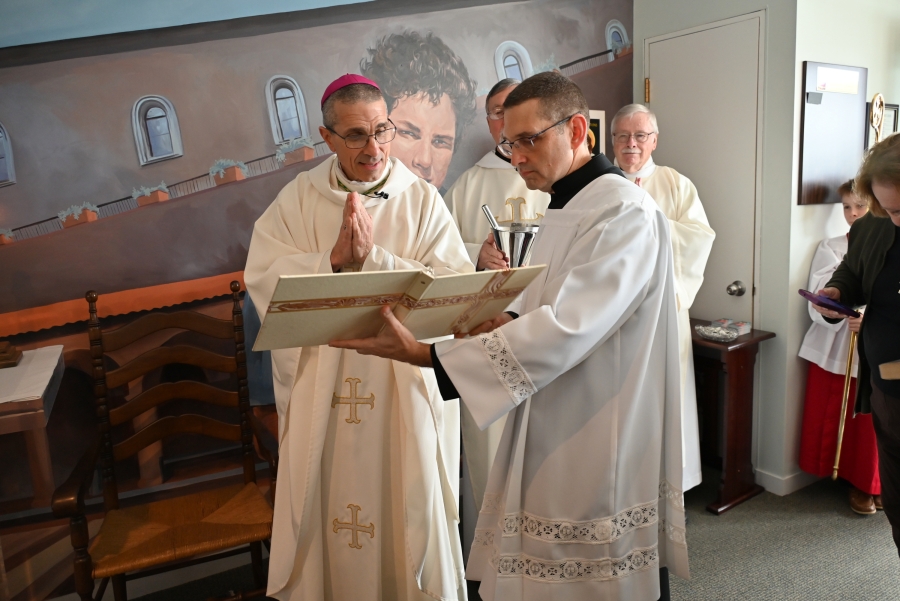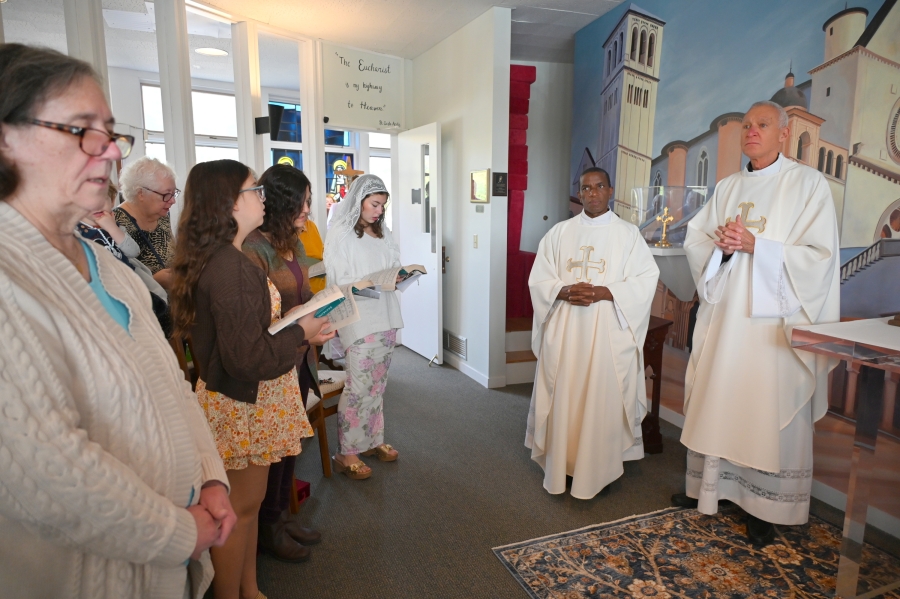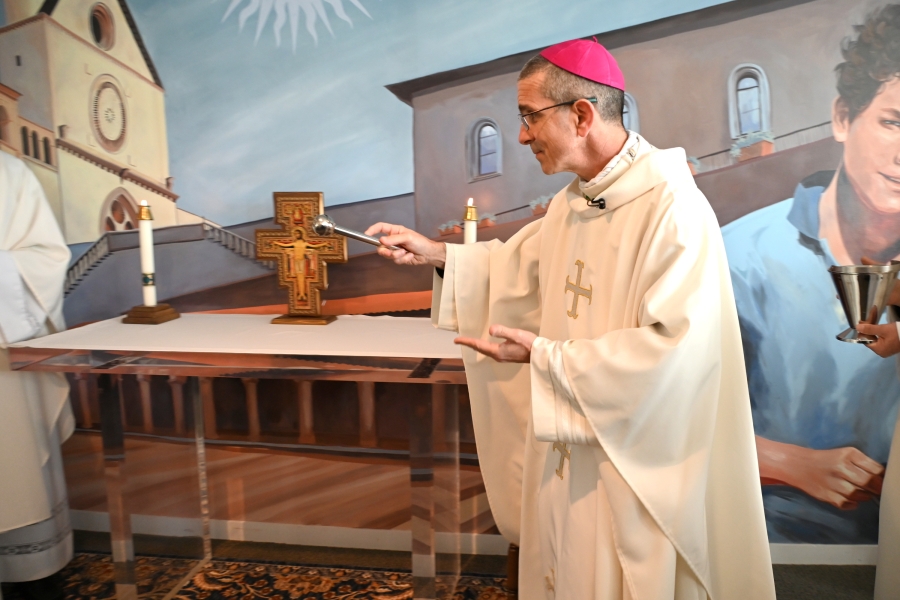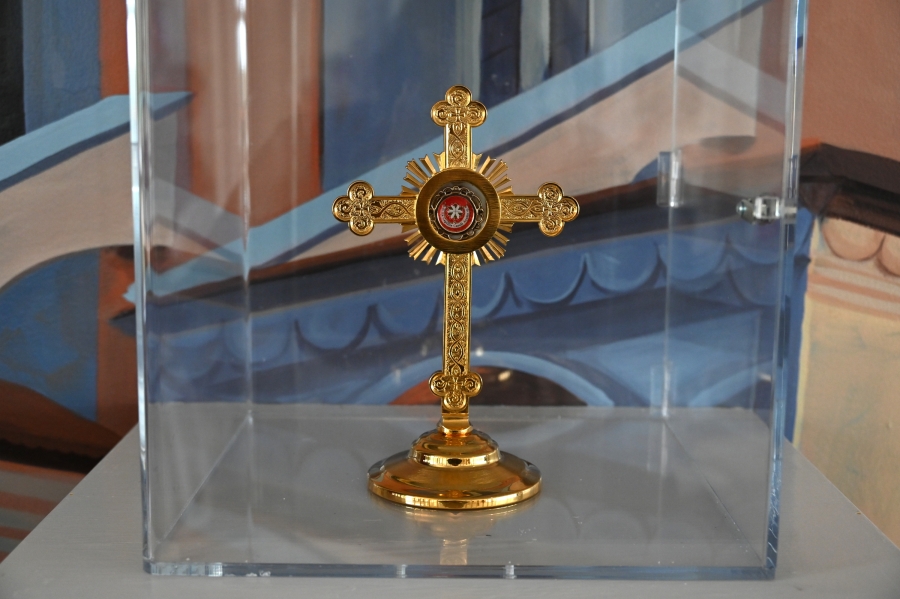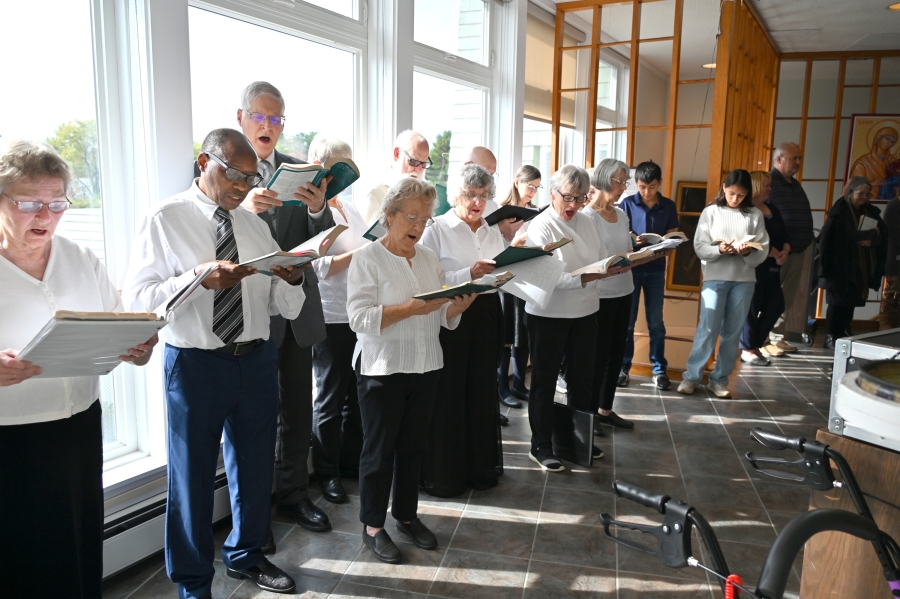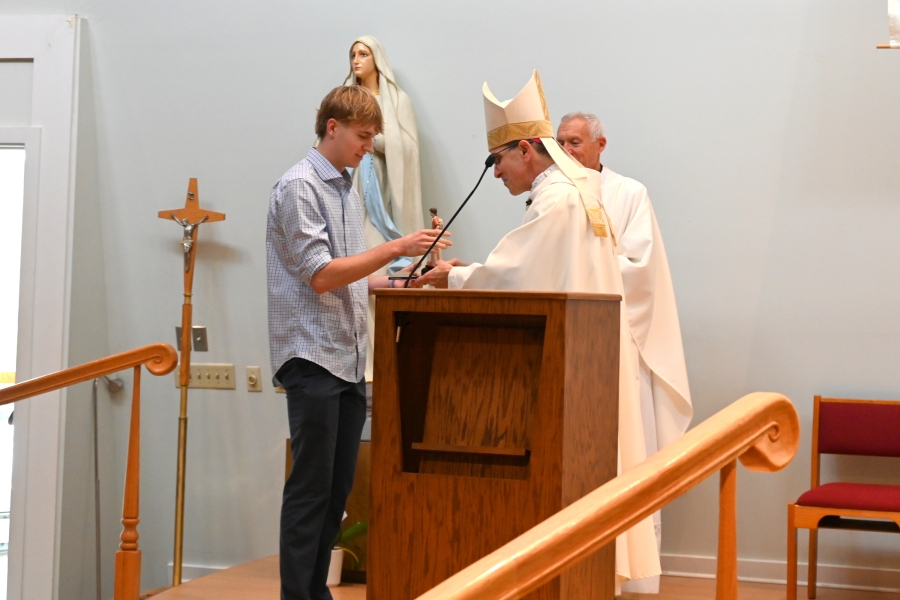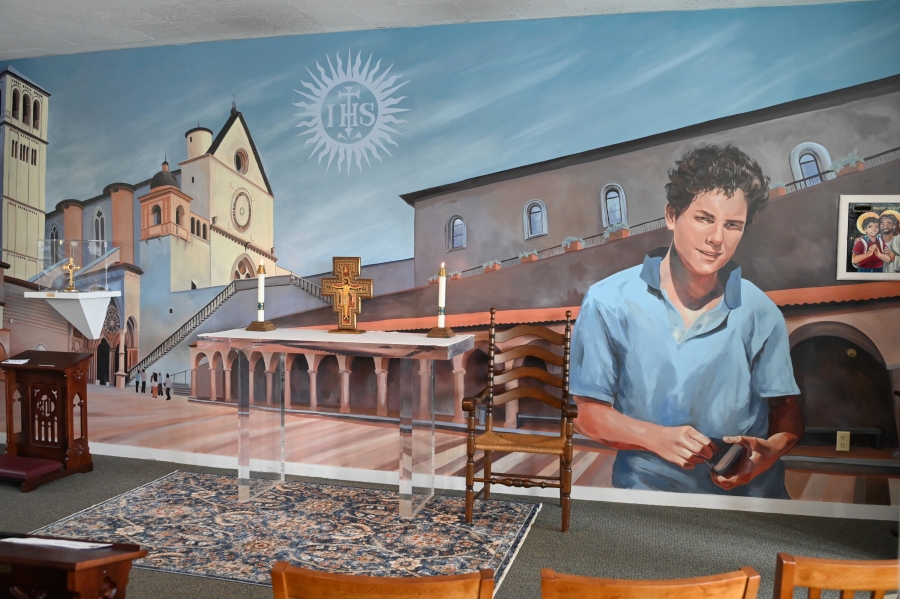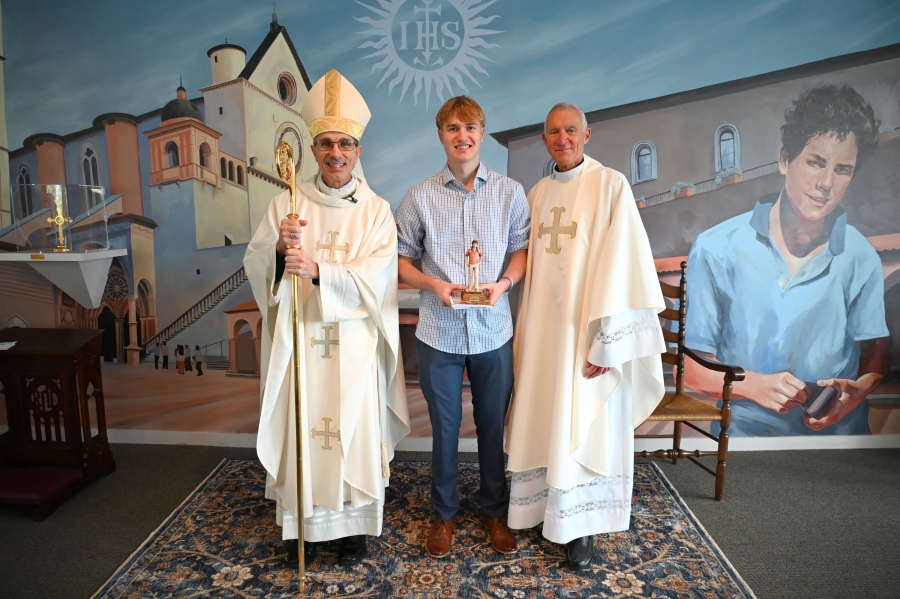New St. Carlo Acutis Veneration Chapel is blessed by Bishop James Ruggieri

Calling it a moment of distinction for St. Anthony of Padua Parish, Bishop James Ruggieri blessed a veneration chapel at St. Anne Church in Gorham that is dedicated to one of the Church’s newest saints, St. Carlo Acutis. St. Carlo, who died in 2006 at the age of 15, was canonized by Pope Leo XIV on September 7.
“This new chapel that we dedicate today is a place of encounter with the Lord and a tribute to the young saint who placed the Eucharist at the center of his life. Here, the faithful will venerate a relic of St. Carlo, contemplate his image, and be reminded that holiness is possible in our own time,” Bishop Ruggieri said.
During the Mass, celebrated on October 12, St. Carlo Acutis’s feast day, Bishop Ruggieri asked the Lord to “grant peace to all who come here in discord and struggle, his serenity to those disturbed by life or relations, his light and discernment to those confused or indecisive, solace and solitude to those who come to rest in the Lord’s presence, and healing to those who are suffering in body, mind, or soul.”
The bishop then walked through the chapel and into the narthex, sprinkling the walls, the altar, a relic of St. Carlo, and parishioners with holy water. He then blessed St. Carlo medals, which were distributed to parishioners at the conclusion of the Mass, which continued in the main church after the blessing ceremony.
Born in London, England, in 1991 to Italian parents, St. Carlo spent his childhood in Milan, Italy, where he developed a deep love for God and the Church. He attended Mass daily and frequently spent time in eucharistic adoration.
Carlo also had a passion for technology and used his knowledge to create a eucharistic miracles exhibit, cataloging 187 Church-approved eucharistic miracles. The exhibit has been displayed around the world, including at St. Anne Church, coinciding with the chapel blessing.
“Carlo’s life reminds us that holiness is not outdated. It is not a relic of the past but the adventure of the present moment. He once said that to always be close to Jesus, ‘that is my life plan.’ For a teenager living in the middle of social media, games, and online noise, that was revolutionary. He reminds us that the Gospel does not silence the modern world; it transforms it. Carlo used the very tools that so often lead people away from God – the Internet, technology, and media – to draw souls back to the Eucharist,” the bishop said.
In October 2006, Carlo was diagnosed with an aggressive form of leukemia. He died just two weeks later. After his death, two miracles were attributed to his intercession, paving the way for sainthood.
"In his brief illness, he offered his suffering for the pope and for the Church, confident that life with Jesus never ends," the bishop said.
St. Carlo’s body is now entombed at St. Mary Major Church in Assisi, Italy. He wanted to be buried in the town because he had a devotion to St. Francis of Assisi and loved to pray at the saint’s tomb in the Basilica of St. Francis.
Father Louis Phillips, pastor of St. Anthony of Padua Parish, said a visit to St. Carlo’s tomb during an October 2024 pilgrimage was the inspiration for renovating the chapel at St. Anne in honor of the new saint.
"I was seeing young people from all over the world visit, and you just could just see it in their eyes how much they were moved and drawn by not only their visit to the tomb but by Carlo’s whole life and ministry. And to see that in young people was for me really transformational,” explained Father Phillips.
Father Phillips said that he hopes the chapel will become a place for pilgrimages, retreats, and youth gatherings from parishes around the diocese.
"He's a contemporary saint that young people and really anybody can identify with," Father Phillips said.
The St. Carlo Acutis Veneration Chapel features a back wall mural painted by local artist Hope Drenning that depicts St. Carlo Acutis standing in front of the Basilica of St. Francis in Assisi. St. Carlo is holding a cellphone in his hand, an acknowledgement of his use of technology to spread Christ’s word.
The parish was also able to obtain a first-class relic of St. Carlo Acutis which is on permanent display in the chapel. A first-class relic is an actual body part of the saint, rather than something with which he came in contact.
The chapel also includes a life-sized, hand-carved statue of St. Carlo Acutis that was commissioned from the Ferdinand Stuflesser Studios in Otisei, Italy. Carlo is wearing his signature backpack and is holding a Bible and rosary beads in his left hand. A dog, modeled after Father Phillips’ own dachshund, is situated at the saint’s side because Carlo was known to have had a lot of pets, especially dogs.
Another of the chapel’s features are quotes above the door panels, which were painted in calligraphy by local artist Sophie Rahilly. They include quotes from Scripture, from St. Carlo Acutis, and from Pope Francis, who recognized a miracle attributed to Blessed Carlo, clearing the path for his canonization. The quote from Pope Francis reads: “To be saints is not a privilege for the few, but a vocation for everyone.”
As part of the celebration, St. Anthony of Padua Parish also presented its first annual Apostle of the Eucharist Award to a graduating senior who exemplifies the legacy of St. Carlo Acutis through service to the Church, devotion to the Blessed Mother, the Eucharist, and one’s family, being a friend to all, and being a faith model to one’s peers. The winner of the award was Anselm Arbogast, who is now a freshman at the University of Maine in Orono.
“It’s an awesome thing. It was unexpected, but I’m glad for it. I’m very thankful to Bishop Ruggieri and Father Lou for all of this and for all that the Church has given me,” he said. “Praying every day and going to Mass, it sets a baseline for me, and it’s something I hold very dearly in my life.”
Following the blessing ceremony, people gathered in the parish hall to view the eucharistic miracles exhibit.






